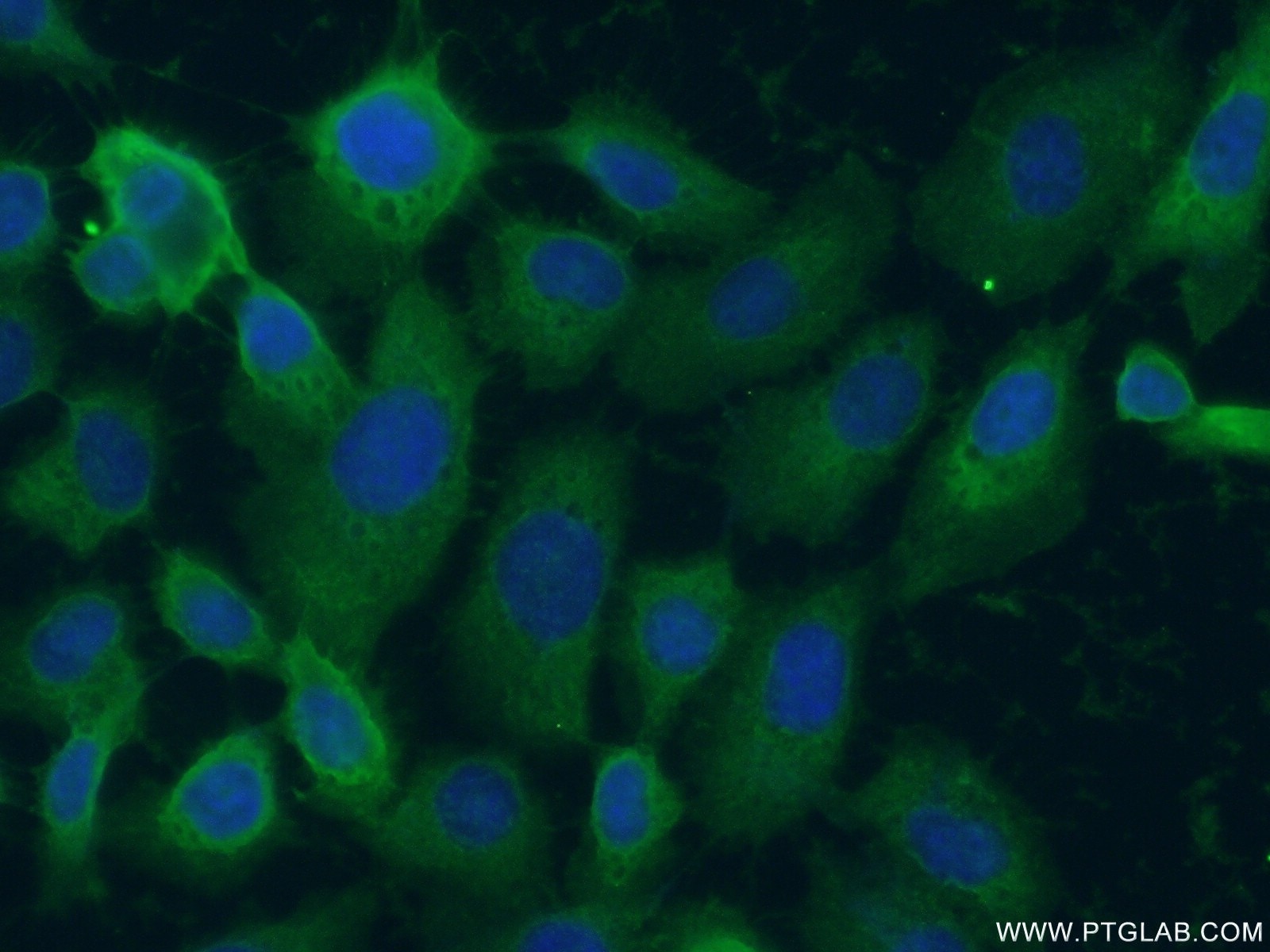Anticorps Polyclonal de lapin anti-L-Plastin
L-Plastin Polyclonal Antibody for WB, IHC, IF/ICC, ELISA
Hôte / Isotype
Lapin / IgG
Réactivité testée
Humain, souris
Applications
WB, IHC, IF/ICC, ELISA
Conjugaison
Non conjugué
N° de cat : 55208-1-AP
Synonymes
Galerie de données de validation
Applications testées
| Résultats positifs en WB | cellules HEK-293, cellules K-562, cellules Ramos |
| Résultats positifs en IHC | tissu de cancer du côlon humain, il est suggéré de démasquer l'antigène avec un tampon de TE buffer pH 9.0; (*) À défaut, 'le démasquage de l'antigène peut être 'effectué avec un tampon citrate pH 6,0. |
| Résultats positifs en IF/ICC | cellules A431 |
Dilution recommandée
| Application | Dilution |
|---|---|
| Western Blot (WB) | WB : 1:2000-1:16000 |
| Immunohistochimie (IHC) | IHC : 1:50-1:500 |
| Immunofluorescence (IF)/ICC | IF/ICC : 1:50-1:500 |
| It is recommended that this reagent should be titrated in each testing system to obtain optimal results. | |
| Sample-dependent, check data in validation data gallery | |
Informations sur le produit
55208-1-AP cible L-Plastin dans les applications de WB, IHC, IF/ICC, ELISA et montre une réactivité avec des échantillons Humain, souris
| Réactivité | Humain, souris |
| Hôte / Isotype | Lapin / IgG |
| Clonalité | Polyclonal |
| Type | Anticorps |
| Immunogène | Peptide |
| Nom complet | lymphocyte cytosolic protein 1 (L-plastin) |
| Masse moléculaire calculée | 70 kDa |
| Poids moléculaire observé | 64-70 kDa |
| Numéro d’acquisition GenBank | NM_002298 |
| Symbole du gène | L-Plastin |
| Identification du gène (NCBI) | 3936 |
| Conjugaison | Non conjugué |
| Forme | Liquide |
| Méthode de purification | Purification par affinité contre l'antigène |
| Tampon de stockage | PBS with 0.02% sodium azide and 50% glycerol |
| Conditions de stockage | Stocker à -20°C. Stable pendant un an après l'expédition. L'aliquotage n'est pas nécessaire pour le stockage à -20oC Les 20ul contiennent 0,1% de BSA. |
Informations générales
LCP1, also known as L-Plastin, is a member of the Plastin gene family. The family members include L-Plastin (LCP1), T-Plastin (PLS3), and I-Plastin (PLS1), which can regulate the dynamic reorganization of the cytoskeleton by binding and cross-linking actin filaments. In lymphocytes, LCP1 can regulate immune responses, especially during inflammation and infection. It acts as a key regulator of T-cell activation by responding to co-stimulatory signals through TCR/CD3 and CD2 or CD28, and regulates the cell-surface expression of IL2RA/CD25 and CD69 (PMID: 17294403).
Protocole
| Product Specific Protocols | |
|---|---|
| WB protocol for L-Plastin antibody 55208-1-AP | Download protocol |
| IHC protocol for L-Plastin antibody 55208-1-AP | Download protocol |
| IF protocol for L-Plastin antibody 55208-1-AP | Download protocol |
| Standard Protocols | |
|---|---|
| Click here to view our Standard Protocols |




